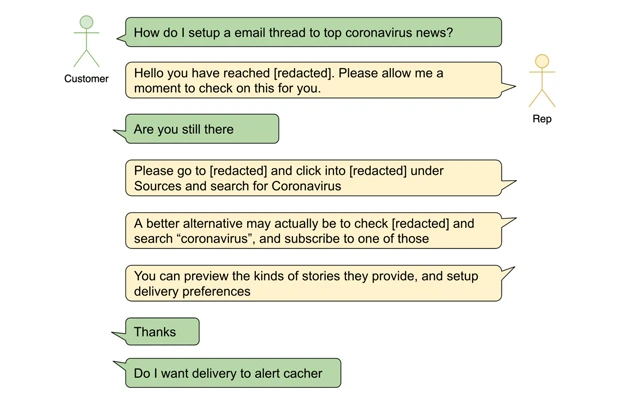SIGDIAL 2021: Improving Question-Answering Live Chat for Enterprise Help Desks
July 27, 2021
During the 22nd Annual Meeting of the Special Interest Group on Discourse and Dialogue (SIGDIAL 2021) this week, Bloomberg engineers are showcasing their expertise in Natural Language Processing and presenting contributions in the area of dialogue systems and question answering.
On Saturday, July 31st, Ling-Yen Liao, an engineer with Bloomberg’s Analytics Help Desk (ADSK) Applications & Intelligence team, where she works on search, machine learning and NLP projects, is presenting “A Practical 2-step Approach to Assist Enterprise Question-Answering Live Chat,” a paper that deals with enterprise help desk question answering, which she co-authored with Tarec Fares, her team lead.
We asked Ling-Yen to summarize their research and explain why the results were notable in advancing the state-of-the-art in the fields of dialogue systems and question answering, and its potential impact on the enterprise help desk market:
Saturday, July 31, 2021
SIGDIAL 2021
Paper Session P6 (21:00–22:00 SGT/9:00-10:00 AM EDT)
A Practical 2-step Approach to Assist Enterprise Question-Answering Live Chat
Ling-Yen Liao and Tarec Fares


Please summarize your research.
Ling-Yen: Our problem of interest is multi-turn question-answering live chat. We want to assist enterprise customer support representatives in better answering questions from customers.


Multi-turn question-answering live chats in enterprise customer service are very diverse, span multiple knowledge domains, and typically have long-form answers. Given that state-of-the-art approaches do not work well for multi-turn chats and long-form answers, we propose a new approach inspired by Community Question-Answering (i.e., searching for knowledge in communities like Quora and Stack Overflow). The proposed approach is simple, yet effective. First, a new question is matched to highly similar historical chats; and then the prior answers are extracted out of the historical chats and presented to support reps as potential options to offer as answers to customers.
Why are these results notable? How does it advance the state-of-the-art in the field of natural language processing/dialogue systems?
The purpose of the work is to enhance the customer experience and to help customers get answers to their questions in the most efficient way possible. The primary goal is to assist support reps in answering live chats and to surface answers for new questions asked by a customer; the secondary goal is to provide reps with a tool where they can explore questions that are closely related to the new question, thereby enhancing their own domain expertise.
State-of-the-art approaches for live chat support use a combination of question-answering (QA) systems and goal-oriented dialogue systems. QA systems typically focus on single-turn, factoid questions with short answers (e.g., the answer for the question “Who is the Vice President of the United States?” is “Kamala Harris”). On the other hand, task-oriented dialogue systems are typically limited in their use in narrow domain-specific applications, like booking an airline ticket or making a restaurant reservation.
Our approach, which is inspired by Community Question Answering, is more suitable for real-world use than QA systems and more generalizable than task-oriented dialogue systems.
Our pilot application in production is popular among reps. The application is impactful and is making suggestions for about half of current live chats. Also, in more than one in three chats, our suggestions are being used by the representatives consistently without fail. This showcases how our two-step approach can influence the broader enterprise customer service industry by helping to improve how fast reps can accurately answer client questions.